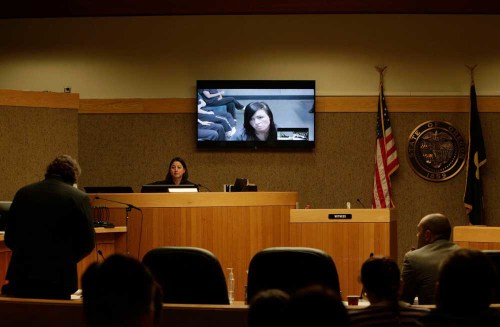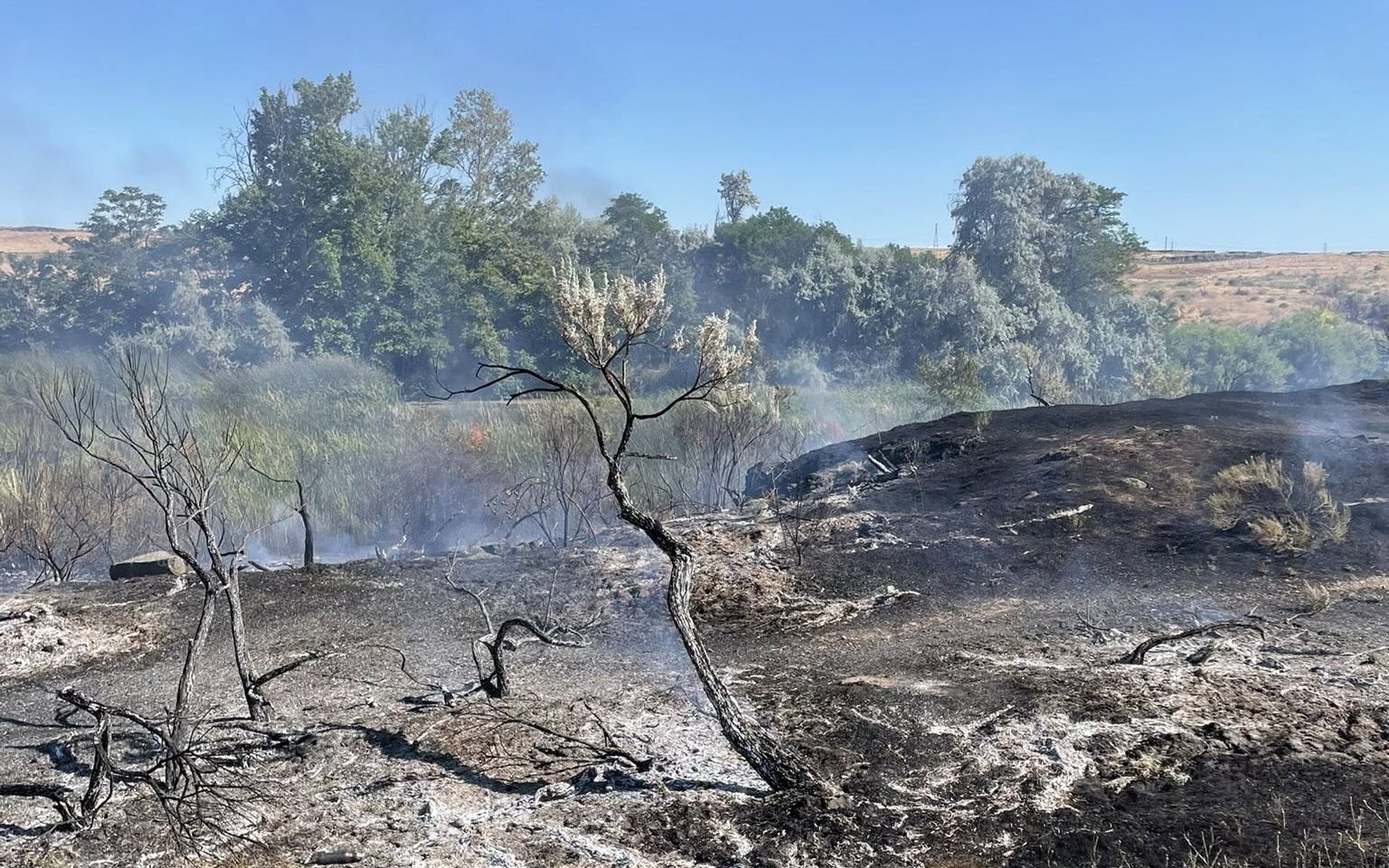Oregon public defense crisis shows no signs of slowing
Published 5:23 pm Friday, June 17, 2022

- January Neatherlin, a day care operator who left her children unattended to go tanning, appears via video in Deschutes County Circuit Judge Beth Bagley's courtroom during a hearing on March 23, 2017, in Deschutes County Circuit Court in Bend.
Around this time last year, the head of the Office of Public Defense Services, the state agency responsible for paying public defenders in Oregon, announced on a conference call that, after years of scraping by financially, his office was out of money.
Twelve months and three directors later, the office has found ways to balance its budget with the help of emergency funds, and is offering public defenders a new one-year contract featuring modest pay increases. But last week, a majority of Oregon public defense groups, an estimated two-thirds, balked at the contract and refused to sign, citing issues including a provision that would have required attorneys to travel to represent clients outside their home counties.
In response to the outcry, a legislative stakeholder group met Thursday morning to discuss altering the contract, and by the end of the workday, a new contract was sent out to lawyers around the state. Key changes include allowing lawyers to perform work on the side, and the so-called neighboring county provision is now a suggestion, not required.
Representatives of public defense groups in Central Oregon told The Bulletin they’ll take the weekend to read and discuss the new contract. They intend to give feedback to the board that oversees the Office of Public Defense Services budget, the Public Defense Services Commission, before it meets Thursday to consider approving the revised contract.
Peter Deuel, co-administrator of the public-defense provider Bend Attorney Group, said one issue that remains is a serious workload discrepancy between public defenders who work the adult and juvenile systems.
The juvenile justice system is much different than the adult system, a key difference being that cases in the juvenile system take longer than adult criminal cases, often years longer.
Attorneys in the juvenile system say the new contract, which requires them to assume 69 cases in addition to their current caseload, will unfairly burden them.
“We still have some serious concerns with how the latest contract accounts for existing caseloads,” Deuel said.
For Bend defense attorney Jamie Gerlitz, who works exclusively in the juvenile system, cases are coming in faster than they’re being cleared. She said the new juvenile contracts will further entrench a system of haves and have-nots in Oregon.
“If a youth is lucky enough to reside in a county with the Parent Child Representation Project, the outlook for that county’s youth is actually rosy,” she said. “For most of Oregon, however, the outlook is grim.”
The Parent Child Representation Project is a hot topic in public defense.
In 2014, the Office of Public Defense Services began a pilot program to reform juvenile public defense. The Parent Child Representation Project was a pet project of newly elected Gov. Kate Brown, herself a former juvenile public defender.
The project favors a “workload” model over “caseload” model. Attorneys work a maximum caseload of 80 cases and have access to a full-time legal assistant and a social worker.
The pilot program led to positive outcomes in the pilot counties of Yamhill and Linn, including a 20% reduction in foster care placement and faster rates of family reunification.
The project was expanded to five counties, with a plan to reach every county in Oregon by 2022. Deschutes was scheduled to get a Parent Child Representation Project in 2018, for a cost of $1 million per year. But after five counties, the project ran out of money and other justice issues drew widespread focus. The project’s standards never came to Deschutes County and most of the state.
In 2019, a bombshell study was released by the 6th Amendment Center, finding that the Office of Public Defense Services’ complex bureaucracy hindered justice for defendants. The study reported the caseload model had incentivized public defenders to take on more cases than they could handle. The study recommended a workload model instead.
With the new contract period beginning July 1, and little money to go around, it’s not expected the contract will contain major reforms. The head of the Office of Public Defense Services, Stephen Singer, emailed public defense contractors Thursday explaining the difficult situation.
“We hear you,” Singer wrote. “We agree that an open workload model, as what exists in the Parent Child Representation Program, is the most accurate, sustainable, and responsible way to contract. Your concerns are completely valid. The unfortunate reality is that that obtaining the resources, building the infrastructure, and implementing that kind of fundamental change will take some time.”
State Rep. Jason Kropf, D-Bend, a member of the stakeholder workgroup creating legislation to reform public defense in the 2023 legislative session, notes the contract issue is an immediate problem, while a larger problem of reforming public defense looms further out.
He said he’s trying to keep an open mind and didn’t yet favor a specific plan for addressing the problem.
“This has been identified as a priority by the governor, the chief justice of the Oregon Supreme Court, the speaker of the House and the president of the Senate,” Kropf said. “There’s a large group of us committed to addressing this and determining our long-term vision of public defense in Oregon.”
Kropf will likely be in the center of the conversation in the 2023 legislative session. On Friday, he learned he’d been appointed to serve as chairman of the House Interim Judiciary Committee.
The public defense crisis shows no sign of slowing. Last week in Oregon, 39 of the adults charged with crimes who hadn’t been afforded representation were being held in custody. They include some high-profile defendants like John Mann, Oregon’s chief administrative law judge who is charged with encouraging child sexual abuse.
This week, there were 52.






